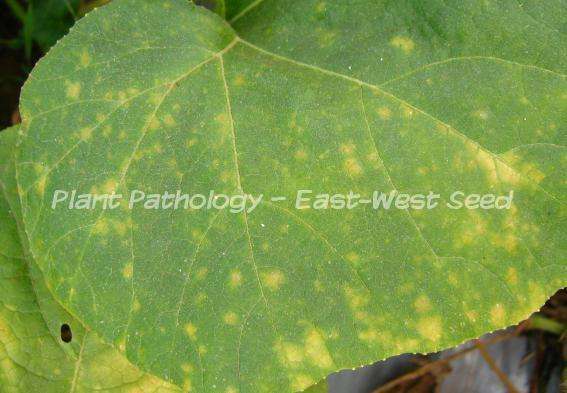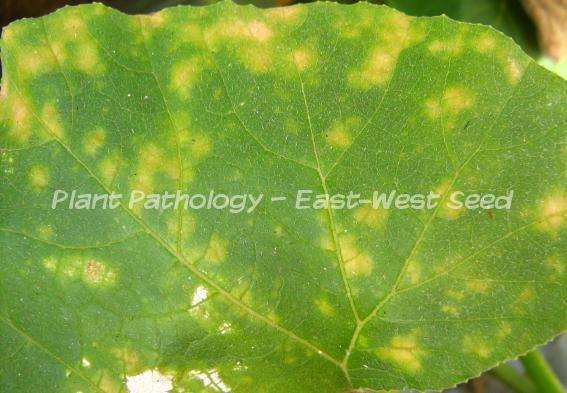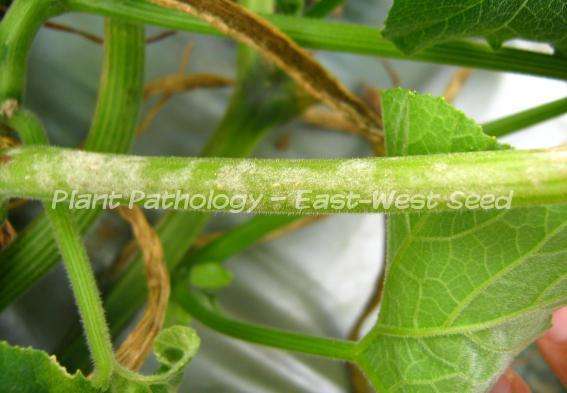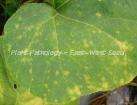Causal Agent:
Fungus (Oidium sp.)
| Characteristic Symptoms: | |
 |
Leaves, stems and petioles may be affected. |
 |
Affected part consists of white, talcum-like, powdery mold/pustules on the upper leaf surface. |
 |
Infected leaves turn yellow, wither and die. |
| Conditions for Disease Development: | |
 |
The disease develops quickly under favorable conditions (dense plant growth and low light intensity). |
 |
High relative humidity is favourable for infection and conidia survival; however infection can occur at RH below 50%. |
 |
The optimum temperature for disease development is 20-27°C; Under field conditions, the disease stops at high temperatures (38°C and above). |
 |
The time between infection and symptom appearance is 3-7 days, in which large number of spores/conidia are produced. |
| Management and Control: | |
 |
Use resistant varieties, if available.
|
 |
Avoid planting in low, shady areas or increase light intensity in the area.
|
 |
Provide good air circulation to minimize disease incidence and severity. |
 |
Avoid excessive use of N fertilizer or use a slow-release fertilizer.
|
 |
Avoid furrow irrigation when infection is high.
|
 |
Apply sulfur-based fungicide (e.g. Kumulus®) or thiophanate-methyl (e.g. Tango, Topsin®) at the early sign of the disease. |
 |
When plants are susceptible, thorough application of fungicides such as azoxystrobin (Amistar®, MiradorⓇ, RobatoⓇ), difenoconazole (e.g. ScoreⓇ, MontanaⓇ, PursueⓇ, BashⓇ), tebuconazole (e.g. Folicur®) is necessary to minimize infection. |
| References: | |
| Compendium of Cucurbit Diseases (1996) by the American Phytopathological Society | |
To view other diseases, click here.
Need more help? Ask the Doctor.










